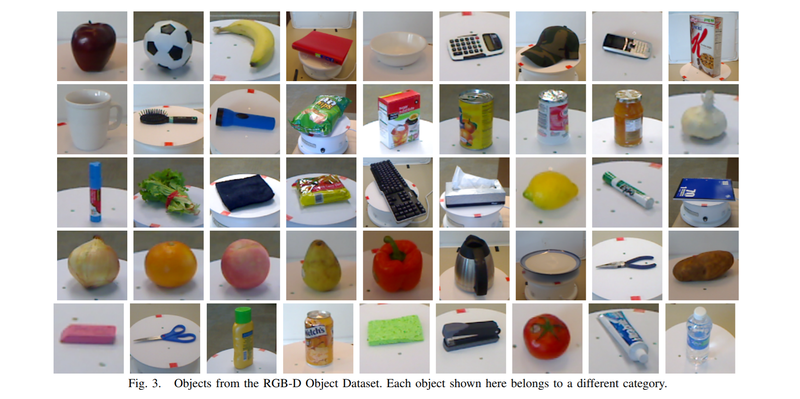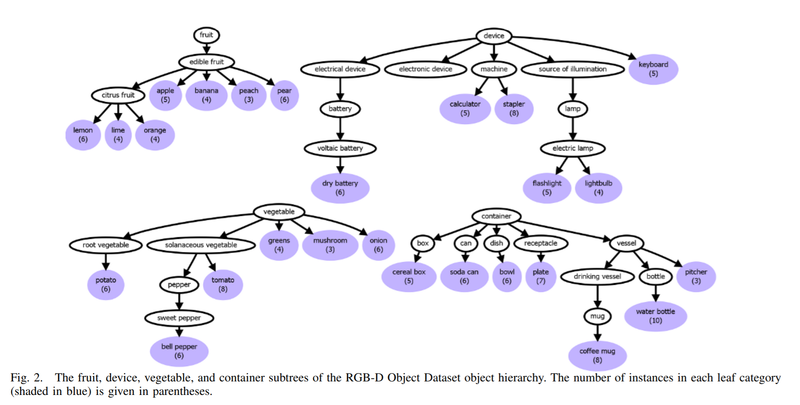CISC849 S2018 HW2
Due Friday, March 23, midnight
Description
NOTE: YOU MAY WORK ALONE OR IN TEAMS OF TWO
Continuing the theme from HW #1, this assignment is a classification challenge. You will use the UW RGB-D Object Dataset, which was introduced in this ICRA 2011 paper. Example images are shown below:
Images are generally small -- in the range of 50 x 50 to 100 x 100.
There are 51 object categories with 300 total instances (e.g., 5 examples of apple, 6 examples of pliers, and so on), and multiple views of each instance both as color and depth images. A hierarchy of object types, shown below, indicates that there are 4 main groups: fruits, vegetables, devices, and containers.
The naming scheme for different objects, instances, views, etc. are given here.
These are taken from a larger object dataset that you are welcome to test your code on. For grading, I will try your submissions on some of the other "learn" point clouds (but not the "test" data).
Tasks
- First, use pcl_viewer to inspect the point clouds and get a sense for how they look
- For each point cloud, count the number of objects. One way to do this is to fit the tabletop plane using PCL's RANSAC functionality, then use Euclidean clustering. But other methods are possible and may be more robust [5 points]
- Assuming you know that you are looking at just boxes or just cylinders that are standing "upright" (not on their side, not leaning diagonally), output estimated parameters for each object. For boxes, this means height x width x length; for cylinders this means height x radius [5 points]
- Assuming you know that only one type of object is on the table, but you don't know which one, can you develop a "test" to tell which is which? [5 points]
You might want to try voxelization before any other processing to reduce the size of the data if your code is running slowly.
Please submit ONE main.cpp file containing all code to Canvas. Ideally, your program will take an input .pcd file on the command line as well as a flag indicating whether mode 1, 2, or 3 above is being run, and print the required information to standard out. Please also include a README with your name (and that of your teammate) that briefly explains how you approached each task, and any issues you encountered or interesting observations you made.

